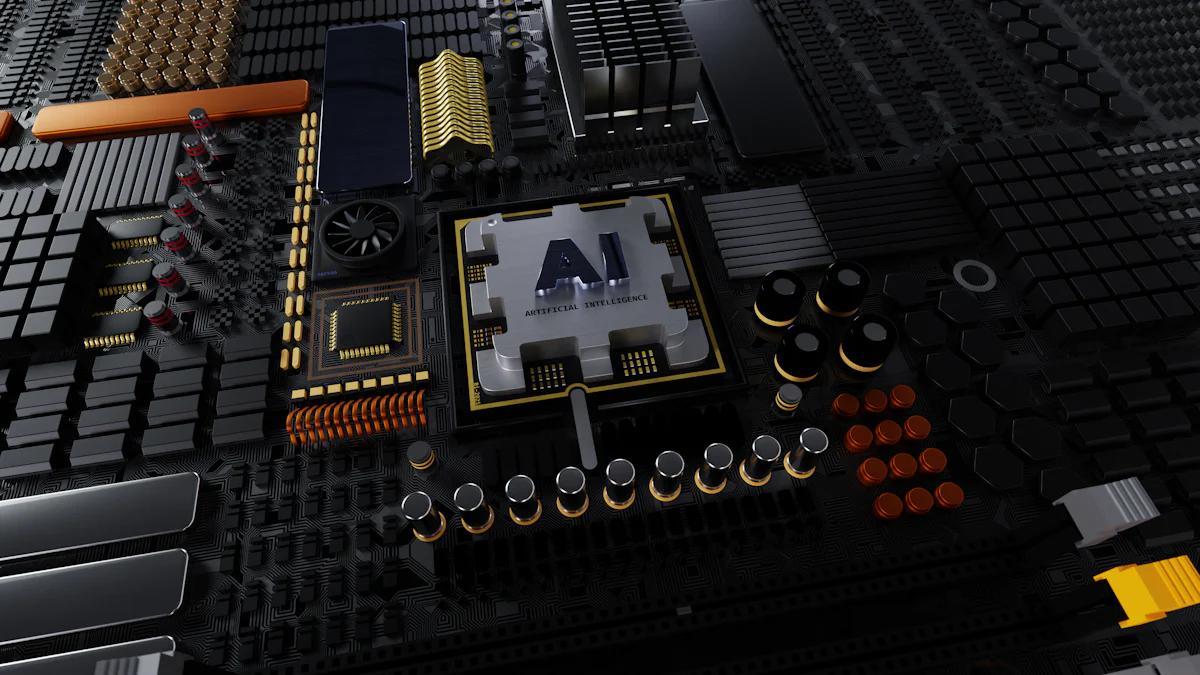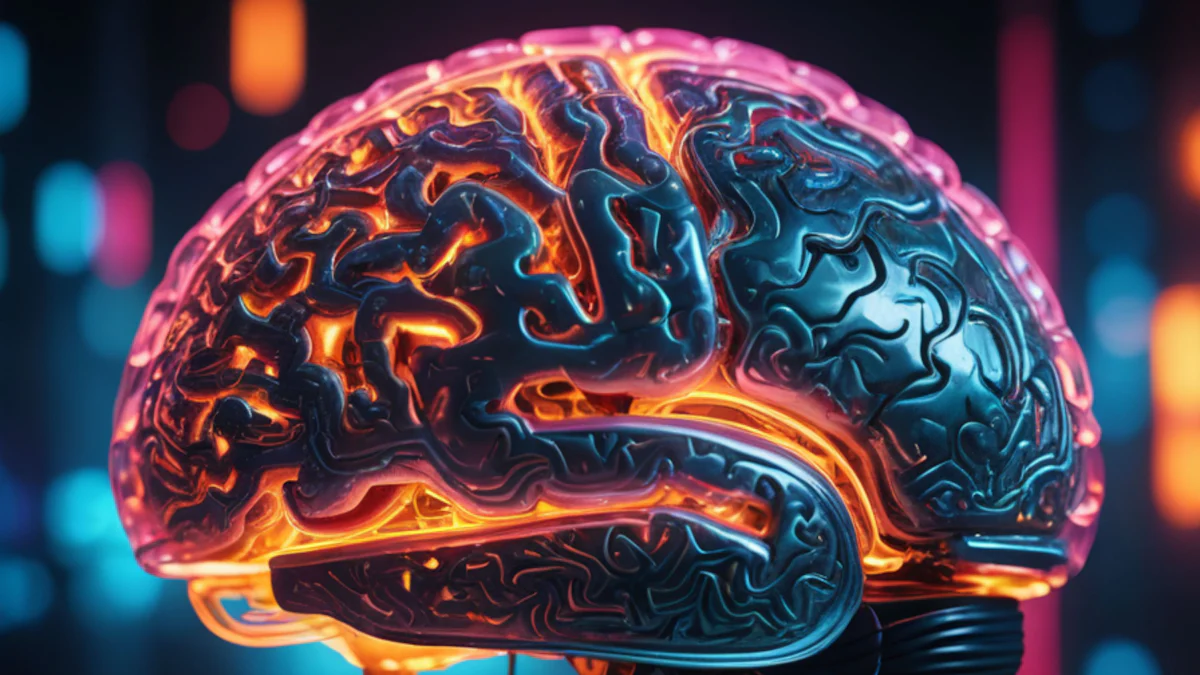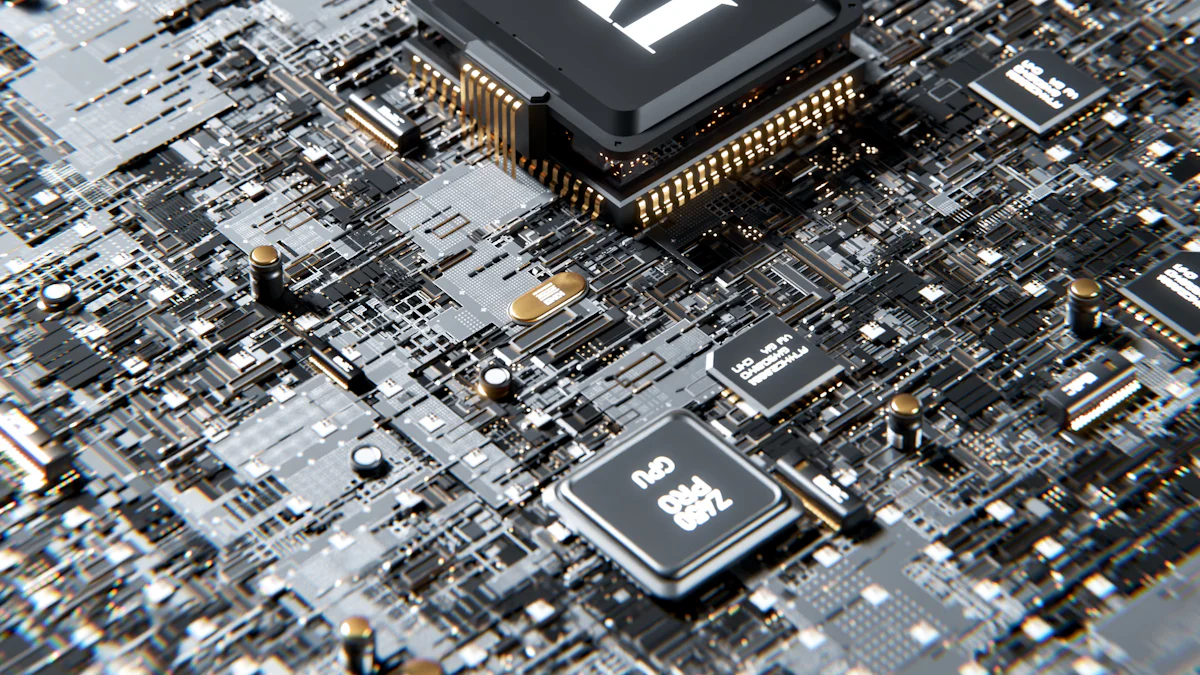The History of Generative AI: From Concept to Reality

Generative AI represents a fascinating branch of artificial intelligence. It focuses on creating new content, such as images, music, and text, by learning patterns from existing data. Understanding its history is crucial for grasping how it has evolved into a powerful tool in various fields. This exploration reveals the journey from early theoretical concepts to the sophisticated models we see today. By examining its development, one gains insight into the technological advancements that have shaped its current capabilities.
Early Concepts and Theoretical Foundations
Initial Ideas of Artificial Intelligence
Turing's Contributions
Alan Turing, a pioneering figure in computer science, laid the groundwork for artificial intelligence. He introduced the concept of a "universal machine" capable of performing any computation given the right instructions. This idea became the foundation for modern computers. Turing also proposed the famous "Turing Test," a method to determine if a machine can exhibit intelligent behavior indistinguishable from a human. His work inspired generations of researchers to explore the possibilities of creating intelligent machines.
Early AI Theories
In the mid-20th century, scientists began formulating theories about artificial intelligence. They envisioned machines that could mimic human thought processes. Researchers like John McCarthy and Marvin Minsky played crucial roles in developing these early ideas. McCarthy coined the term "artificial intelligence" in 1956, marking the beginning of AI as a distinct field of study. These early theories focused on symbolic reasoning and logic, setting the stage for future advancements in AI.
The Birth of Machine Learning
Perceptrons and Early Models
The concept of machine learning emerged as researchers sought ways for machines to learn from data. Frank Rosenblatt introduced the perceptron model in 1958, a simple neural network capable of learning to recognize patterns. This model represented a significant step forward in AI research. Perceptrons demonstrated that machines could adapt and improve their performance over time, paving the way for more complex learning algorithms.
Limitations and Challenges
Despite the promise of early models like perceptrons, researchers faced significant challenges. Perceptrons struggled with tasks that required understanding complex patterns. In 1969, Marvin Minsky and Seymour Papert published a book highlighting these limitations, which led to a temporary decline in interest in neural networks. However, these challenges spurred further research and innovation, ultimately leading to the development of more advanced machine learning techniques.
The Rise of Neural Networks

The Revival of Neural Networks
Backpropagation Algorithm
In the 1980s, researchers reignited interest in neural networks. They introduced the backpropagation algorithm, which significantly improved the training of neural networks. This algorithm allowed networks to adjust their weights through a process of error correction. By minimizing the difference between predicted and actual outcomes, backpropagation enabled more accurate learning. Researchers like Geoffrey Hinton played a pivotal role in popularizing this method. Their work laid the groundwork for modern neural network applications.
Key Figures in Neural Network Development
Several key figures contributed to the development of neural networks. Geoffrey Hinton, Yann LeCun, and Yoshua Bengio emerged as leading researchers in this field. They advanced neural network architectures and algorithms, making them more efficient and effective. Their contributions earned them the nickname "Godfathers of AI." These pioneers pushed the boundaries of what neural networks could achieve, setting the stage for the deep learning revolution.
Deep Learning Revolution
Breakthroughs in Image and Speech Recognition
The deep learning revolution brought significant breakthroughs in image and speech recognition. Convolutional neural networks (CNNs) excelled at processing visual data, enabling machines to recognize objects and patterns in images. Similarly, recurrent neural networks (RNNs) improved speech recognition by analyzing sequences of audio data. These advancements transformed industries, from healthcare to entertainment, by automating complex tasks that once required human expertise.
Impact on Generative AI
Deep learning's impact on generative AI proved transformative. Researchers leveraged neural networks to create models capable of generating realistic content. Generative adversarial networks (GANs) emerged as a powerful tool for producing high-quality images, videos, and audio. These models learned to mimic real-world data, opening new possibilities for creativity and innovation. The deep learning revolution not only enhanced existing AI applications but also paved the way for groundbreaking generative technologies.
Emergence of Generative Models

Introduction to Generative Models
Generative AI models have revolutionized the way machines create new content. These models learn patterns from existing data and use this knowledge to generate novel outputs. Two prominent types of generative models are Variational Autoencoders (VAEs) and Generative Adversarial Networks (GANs).
Variational Autoencoders (VAEs)
Variational Autoencoders represent a class of generative models that learn to encode input data into a compressed representation. They then decode this representation to produce new data. VAEs operate by mapping input data to a latent space, which captures the underlying structure of the data. This process allows VAEs to generate new samples that resemble the original data. Researchers use VAEs in various applications, such as image generation and anomaly detection.
Generative Adversarial Networks (GANs)
Generative Adversarial Networks have gained significant attention in the field of generative AI. Ian Goodfellow introduced GANs in 2014, marking a major milestone in AI development. GANs consist of two neural networks: a generator and a discriminator. The generator creates new data samples, while the discriminator evaluates their authenticity. These networks compete against each other, improving their performance over time. GANs have proven effective in generating realistic images, videos, and audio, pushing the boundaries of what machines can create.
Applications and Innovations
Generative AI has found applications across various domains, driving innovation and creativity. Its ability to produce realistic content has opened new possibilities for artists, researchers, and businesses.
Art and Creativity
Generative AI has transformed the art world by enabling artists to explore new creative avenues. Artists use generative models to produce unique artworks, blending human creativity with machine intelligence. These models can generate paintings, music, and even poetry, offering fresh perspectives on artistic expression. Generative AI empowers artists to experiment with styles and techniques, leading to innovative and captivating creations.
Data Augmentation and Synthesis
In addition to art, generative AI plays a crucial role in data augmentation and synthesis. Researchers use generative models to create synthetic data, which enhances machine learning models' performance. This process involves generating additional training data to improve model accuracy and robustness. Data augmentation proves valuable in fields like healthcare, where acquiring large datasets can be challenging. By generating synthetic data, researchers can train models more effectively, leading to better outcomes in various applications.
Key Milestones in Generative AI
Significant Breakthroughs
AlphaGo and Reinforcement Learning
AlphaGo marked a pivotal moment in the history of generative AI. Developed by DeepMind, AlphaGo became the first AI program to defeat a professional human player at the complex board game Go. This achievement demonstrated the power of reinforcement learning, a technique where AI learns by trial and error to maximize rewards. AlphaGo's success showcased the potential of AI to tackle intricate problems and opened new avenues for research in generative AI.
GPT and Language Models
The introduction of Generative Pre-trained Transformer (GPT) models revolutionized natural language processing. OpenAI developed GPT, which uses deep learning to generate human-like text. These models can write essays, answer questions, and even create poetry. GPT's ability to understand and generate language with remarkable fluency has transformed industries such as customer service and content creation. It represents a significant leap forward in the capabilities of generative AI.
Influential Research Papers
Landmark Publications
Several research papers have played a crucial role in advancing generative AI. Ian Goodfellow's paper on Generative Adversarial Networks (GANs) introduced a novel approach to generating realistic data. This publication laid the foundation for numerous applications in image and video synthesis. Another landmark paper by Vaswani et al. introduced the Transformer model, which became the backbone of many state-of-the-art language models, including GPT.
Impact on the Field
These influential papers have had a profound impact on the field of generative AI. They have inspired countless researchers to explore new techniques and applications. The introduction of GANs and Transformers has led to breakthroughs in various domains, from art and entertainment to healthcare and finance. These innovations have expanded the possibilities of what generative AI can achieve, driving continuous advancements and shaping the future of artificial intelligence.
Current Trends and Developments
State-of-the-Art Techniques
Transformer Models
Transformer models have revolutionized the field of natural language processing. They excel at understanding and generating human-like text. Researchers developed these models to process sequences of data, such as sentences, more efficiently than previous methods. Transformers use a mechanism called "attention" to weigh the importance of different words in a sentence. This allows them to capture complex relationships and context. As a result, transformers have become the backbone of many advanced language models, including GPT. Their ability to generate coherent and contextually relevant text has transformed industries like customer service and content creation.
Diffusion Models
Diffusion models represent a cutting-edge approach in generative AI. These models focus on generating high-quality images by simulating the diffusion process. Researchers designed diffusion models to gradually refine random noise into detailed images. This iterative process allows them to produce realistic and diverse outputs. Diffusion models have gained attention for their ability to generate images with fine details and textures. They have applications in fields such as art, design, and entertainment. By pushing the boundaries of image generation, diffusion models continue to drive innovation in generative AI.
Ethical and Societal Implications
Bias and Fairness
Generative AI raises important ethical considerations, particularly regarding bias and fairness. AI models learn from existing data, which may contain biases present in society. These biases can manifest in the outputs generated by AI systems. Researchers and developers must address these issues to ensure fair and unbiased AI applications. They employ techniques such as data preprocessing and algorithmic adjustments to mitigate bias. Promoting fairness in generative AI requires ongoing efforts to identify and rectify biases in training data and models.
Regulation and Governance
The rapid advancement of generative AI necessitates effective regulation and governance. Policymakers and industry leaders must establish guidelines to ensure responsible AI development and deployment. Regulations should address concerns related to privacy, security, and ethical use of AI-generated content. Governance frameworks can help prevent misuse and ensure accountability. Collaboration between governments, organizations, and researchers is essential to create a balanced approach. By implementing robust regulations, society can harness the benefits of generative AI while minimizing potential risks.
Future Directions and Possibilities
Emerging Technologies
Quantum Computing and AI
Quantum computing represents a groundbreaking advancement in technology. It leverages the principles of quantum mechanics to process information at unprecedented speeds. Researchers believe that quantum computing will revolutionize artificial intelligence. Quantum computers can solve complex problems much faster than classical computers. This capability will enhance AI algorithms, making them more efficient and powerful. Scientists anticipate that quantum computing will enable AI to tackle challenges that are currently beyond reach. The integration of quantum computing and AI promises to unlock new possibilities in various fields.
AI in Healthcare and Medicine
Artificial intelligence is transforming healthcare and medicine. AI systems analyze vast amounts of medical data to assist in diagnosis and treatment planning. They identify patterns and correlations that may not be apparent to human doctors. AI-powered tools improve patient outcomes by providing personalized treatment recommendations. In addition, AI aids in drug discovery by predicting the effectiveness of new compounds. Researchers continue to explore innovative applications of AI in healthcare. The potential for AI to revolutionize medicine is immense, offering hope for improved healthcare delivery and patient care.
Challenges and Opportunities
Scalability and Efficiency
Scalability and efficiency remain critical challenges in the development of generative AI. As AI models grow in complexity, they require more computational resources. Researchers strive to optimize algorithms to reduce resource consumption. Efficient AI models can operate on a wider range of devices, from powerful servers to mobile phones. Scalability ensures that AI solutions can handle large datasets and diverse applications. By addressing these challenges, developers can create AI systems that are both powerful and accessible.
Collaboration and Innovation
Collaboration drives innovation in the field of generative AI. Researchers, engineers, and industry leaders work together to advance AI technologies. Collaborative efforts lead to the sharing of knowledge and resources. Open-source projects and research papers contribute to the collective understanding of AI. Partnerships between academia and industry foster the development of practical applications. By working together, stakeholders can overcome challenges and seize opportunities. The future of generative AI depends on continued collaboration and a commitment to innovation.
Impact of Generative AI on Society
Transformative Effects
Economic and Industrial Impact
Generative AI has significantly influenced the economy and various industries. Businesses have adopted AI technologies to enhance productivity and efficiency. Automated systems powered by AI streamline operations, reducing costs and increasing output. In manufacturing, AI-driven robots perform tasks with precision and speed, leading to higher production rates. The financial sector benefits from AI algorithms that analyze market trends and predict investment opportunities. These advancements contribute to economic growth and create new job opportunities in AI development and maintenance.
Cultural and Artistic Influence
Generative AI has also left its mark on culture and the arts. Artists and creators use AI tools to explore new forms of expression. AI-generated art challenges traditional notions of creativity, offering fresh perspectives and innovative styles. Musicians experiment with AI to compose unique melodies and harmonies. In literature, AI assists writers in generating ideas and crafting narratives. This fusion of human creativity and machine intelligence enriches cultural landscapes, inspiring artists to push boundaries and redefine artistic expression.
Public Perception and Acceptance
Trust and Transparency
Public perception of generative AI hinges on trust and transparency. People often express concerns about AI's decision-making processes and potential biases. To build trust, developers must ensure transparency in AI systems. They should provide clear explanations of how AI models function and make decisions. Open communication fosters confidence in AI technologies and encourages their acceptance. By addressing ethical concerns and demonstrating accountability, developers can enhance public trust in generative AI.
Education and Awareness
Education plays a crucial role in shaping public perception of generative AI. Informing individuals about AI's capabilities and limitations empowers them to make informed decisions. Educational programs and workshops can demystify AI technologies, making them accessible to a broader audience. By raising awareness, society can better understand the benefits and challenges of AI. This knowledge fosters a more informed and engaged public, ready to embrace the opportunities generative AI presents.
Generative AI has traveled a remarkable path from its early theoretical roots to its current state. It has evolved into a powerful tool that influences various fields, from art to healthcare. Today, it stands at the forefront of technological innovation, offering immense potential for future advancements. As society continues to explore its capabilities, generative AI will undoubtedly play a pivotal role in shaping the future. Its ability to generate new content and solve complex problems highlights its significance in driving progress and creativity.
